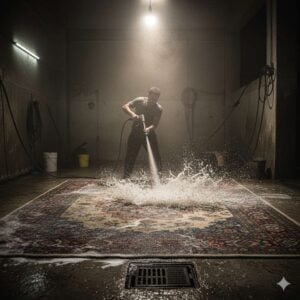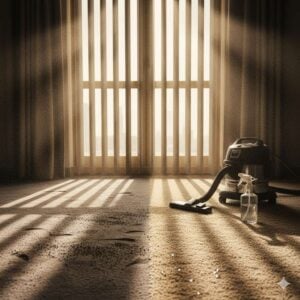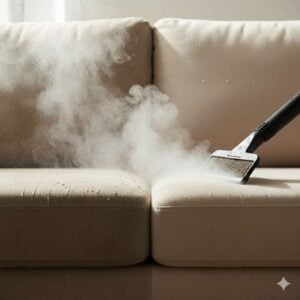Hello and welcome to our latest exploration on the indispensable topic of mold removal, specifically focusing on the vibrant city of Sharjah. “Mold Removal Sharjah” isn’t just a keyword we’re casually throwing around; it’s a critical service that impacts health, property value, and overall well-being. In this post, we delve into why understanding the nuances of effective mold removal services is not only essential but can be a game-changer for residents and property owners in Sharjah. With mold being a sneaky adversary that can lurk in the least expected places, knowing how to combat it effectively is paramount. Let’s embark on this enlightening journey together, exploring the seven most effective mold removal services that promise to bring back the safety and comfort of your indoor spaces.
Table of Contents
Toggle#1 Advanced Moisture Detection
In the battle against mold in Sharjah, understanding the crucial role of advanced moisture detection cannot be overstated. Moisture is the lifeline for mold growth, providing the perfect environment for it to flourish undetected, often within walls, under floors, or in other hidden areas of a property. The first step in effective mold removal is identifying these moisture-rich areas, which, if left unchecked, can lead to extensive mold proliferation and structural damage.
Employing state-of-the-art technology, professionals can pinpoint the exact locations of moisture accumulation. Tools such as infrared cameras, moisture meters, and hygrometers play pivotal roles in this process. Infrared cameras, for instance, can visually display variations in temperature on surfaces, which helps in identifying damp areas that are prone to mold growth. Moisture meters, on the other hand, provide quantitative data on the moisture content in materials, allowing for targeted remediation efforts. Hygrometers measure the relative humidity in the air, which, when too high, can indicate an environment conducive to mold growth.
Early detection of moisture not only prevents the spread of mold but also significantly reduces the potential health risks and structural damage associated with it. Once moisture sources are identified, appropriate steps can be taken to eliminate them, which may include fixing leaks, improving ventilation, or using dehumidifiers to reduce indoor humidity levels. This preemptive approach is far more cost-effective and less disruptive than addressing a full-blown mold infestation.
This image should depict professionals using these tools in a residential setting, highlighting how non-invasively they can detect moisture behind walls and under floors. The illustration should help readers visualize the process and understand the importance of these technologies in identifying hidden mold risks.
By incorporating advanced moisture detection into mold remediation efforts, residents in Sharjah can ensure their homes and workplaces are not only mold-free but also protected against the conditions that allow mold to emerge. This strategic approach to mold removal underscores the importance of technology in maintaining healthy, safe indoor environments.
#2 Eco-Friendly Mold Remediation Method
Eco-friendly mold remediation methods are not just a choice but a necessity in today’s world, especially in a place like Sharjah where environmental well-being is a growing concern. These methods focus on removing mold effectively while minimizing harm to the environment and human health. Unlike traditional mold removal techniques that often rely on harsh chemicals, eco-friendly practices use solutions and processes that are safe for both the environment and the occupants of a property.
One of the core strategies in eco-friendly mold remediation is the use of products that contain natural ingredients. These products, derived from plants or other natural sources, are designed to kill mold without releasing harmful toxins into the air. For example, solutions containing tea tree oil, vinegar, or baking soda have been proven to be effective in treating mold infestations without the side effects associated with bleach or ammonia-based products.
Another crucial aspect of eco-friendly mold removal is the method of containment and removal. This involves sealing off the affected area to prevent mold spores from spreading during the cleanup process. Professionals use physical barriers, like plastic sheeting, and negative air pressure to contain the spores. Additionally, HEPA (High-Efficiency Particulate Air) filters are employed to clean the air, capturing even the smallest mold spores and preventing them from circulating back into the environment.
Biodegradable bags are often used for the disposal of mold-infested materials, ensuring that the waste breaks down naturally without leaving harmful residues in landfills. This approach not only addresses the immediate mold issue but also considers the long-term impact on the ecosystem.
This illustration should depict the sequential steps involved in eco-friendly mold remediation, highlighting the use of natural cleaning agents, containment strategies, air filtration techniques, and environmentally friendly disposal methods. It would serve to visually summarize the process, emphasizing the commitment to safety and sustainability.
Through these eco-friendly practices, mold can be removed effectively, ensuring the safety of Sharjah’s residents and the preservation of its environment. This approach not only addresses the current mold issue but also sets a precedent for sustainable living and property maintenance.
#3 Comprehensive Mold and Spore Air Filtration
Comprehensive mold and spore air filtration is a cornerstone in the fight against mold in environments like Sharjah, where the warm climate can exacerbate mold issues. This approach focuses on purifying the air from mold spores, which are capable of spreading and initiating new mold growths even after the original infestation has been removed. Effective air filtration strategies are crucial for creating a safe, mold-free living environment, especially in closed spaces where air circulation may be limited.
The process begins with the use of High-Efficiency Particulate Air (HEPA) filters, which are designed to capture 99.97% of particles that are 0.3 microns or larger in diameter. HEPA filters are effective in trapping mold spores, preventing them from circulating through the air and settling on surfaces where they can grow. These filters are used in various equipment, including air purifiers, HVAC systems, and vacuum cleaners, ensuring comprehensive air filtration throughout the affected area.
In addition to HEPA filters, professionals may employ air scrubbers. These devices draw in contaminated air, pass it through a series of filters, and then release clean air back into the environment. Air scrubbers are particularly useful in scenarios where mold spores have become airborne due to disturbance during the cleaning process. By capturing these spores, air scrubbers help to prevent the spread of mold to other areas of the property.
Another important aspect of this process is ensuring proper ventilation. Opening windows, using exhaust fans, and incorporating fresh air intake systems in HVAC units can significantly reduce indoor humidity levels, making the environment less hospitable to mold growth. Regularly replacing filters in air conditioning and heating systems also plays a crucial role in maintaining air quality and preventing mold spores from recirculating.
This illustration should visually represent how HEPA filters, air scrubbers, and effective ventilation work together to purify the air of mold spores. Highlighting the technology behind these solutions will help readers understand their importance in maintaining a mold-free environment.
Implementing these air filtration measures is essential not only for addressing existing mold issues but also for preventing future infestations. By ensuring the air is free of mold spores, residents in Sharjah can enjoy healthier living conditions and a significantly reduced risk of mold-related health problems.
#4 Structural Drying and Dehumidification
Comprehensive mold and spore air filtration is a cornerstone in the fight against mold in environments like Sharjah, where the warm climate can exacerbate mold issues. This approach focuses on purifying the air from mold spores, which are capable of spreading and initiating new mold growths even after the original infestation has been removed. Effective air filtration strategies are crucial for creating a safe, mold-free living environment, especially in closed spaces where air circulation may be limited.
The process begins with the use of High-Efficiency Particulate Air (HEPA) filters, which are designed to capture 99.97% of particles that are 0.3 microns or larger in diameter. HEPA filters are effective in trapping mold spores, preventing them from circulating through the air and settling on surfaces where they can grow. These filters are used in various equipment, including air purifiers, HVAC systems, and vacuum cleaners, ensuring comprehensive air filtration throughout the affected area.
In addition to HEPA filters, professionals may employ air scrubbers. These devices draw in contaminated air, pass it through a series of filters, and then release clean air back into the environment. Air scrubbers are particularly useful in scenarios where mold spores have become airborne due to disturbance during the cleaning process. By capturing these spores, air scrubbers help to prevent the spread of mold to other areas of the property.
Another important aspect of this process is ensuring proper ventilation. Opening windows, using exhaust fans, and incorporating fresh air intake systems in HVAC units can significantly reduce indoor humidity levels, making the environment less hospitable to mold growth. Regularly replacing filters in air conditioning and heating systems also plays a crucial role in maintaining air quality and preventing mold spores from recirculating.
This illustration should visually represent how HEPA filters, air scrubbers, and effective ventilation work together to purify the air of mold spores. Highlighting the technology behind these solutions will help readers understand their importance in maintaining a mold-free environment.
Implementing these air filtration measures is essential not only for addressing existing mold issues but also for preventing future infestations. By ensuring the air is free of mold spores, residents in Sharjah can enjoy healthier living conditions and a significantly reduced risk of mold-related health problems.
#5 Infrastructural Repair and Restoration
Structural drying and dehumidification form a critical phase in the mold remediation process, particularly in regions like Sharjah, where high humidity levels can create ideal conditions for mold growth. After addressing the immediate mold problem, it’s vital to ensure that the structure is thoroughly dried and future humidity is controlled; otherwise, the cycle of mold growth could begin anew. This phase is not just about removing visible moisture but also about achieving a balance in the building’s moisture content to prevent recurrence.
The process starts with water extraction techniques to remove any standing water, a common issue after incidents like floods or leaks. This step is crucial because standing water can seep into porous materials, leading to mold growth beneath surfaces. Professional-grade water extractors and submersible pumps are typically used for this purpose, ensuring rapid removal of water.
Following water extraction, specialized drying equipment is brought in. This includes industrial air movers and dehumidifiers. Air movers work by circulating air at high velocities, promoting the evaporation of moisture from walls, floors, and other surfaces. Concurrently, dehumidifiers pull the moist air in, remove the moisture, and release dry air back into the environment, accelerating the drying process. This combination effectively reduces the overall humidity level in the structure, making it inhospitable for mold.
Monitoring the drying process is equally important. Professionals use moisture meters and hygrometers to measure the moisture content in materials and the humidity levels in the air, respectively. These tools help ensure that the target dryness levels are achieved throughout the affected areas, not just superficially but deep within walls and floors where mold could hide.
This illustration should depict the sequence of actions taken from water extraction to the deployment of drying and dehumidification equipment, highlighting the critical role of continuous moisture monitoring. Visual representation of these steps can aid in understanding the thoroughness required to ensure a mold-resistant environment.
Completing these steps thoroughly ensures that the property is not only mold-free but also safeguarded against potential future mold issues. For residents in Sharjah, implementing such diligent drying and dehumidification measures is essential for maintaining healthy, mold-free living spaces, reflecting a proactive approach to property care and indoor air quality management.
#6 Preventative Measures and Maintenance Plans
Preventative measures and maintenance plans are key components in ensuring that mold does not become a recurring issue, particularly in areas like Sharjah, where the climate can favor mold growth. Understanding and implementing these strategies can significantly reduce the risk of mold re-infestation, safeguarding the health of the building’s occupants and the integrity of the property itself.
One of the most effective preventative measures is controlling indoor humidity levels. The ideal range to inhibit mold growth is between 30% and 50% relative humidity. This can be achieved through the use of dehumidifiers, which remove excess moisture from the air, and by ensuring proper ventilation throughout the property. Ventilation is especially important in high-moisture areas such as kitchens, bathrooms, and laundry rooms. Installing exhaust fans and opening windows when weather permits can help reduce moisture accumulation.
Regular maintenance checks are also crucial in preventing mold. This includes inspecting plumbing for leaks, ensuring that gutters and downspouts are clear and functioning properly to direct water away from the building, and checking the building’s exterior for any signs of water intrusion. Such inspections should be conducted at least twice a year or following any significant weather events.
Another preventative strategy is the use of mold-resistant materials during repairs or renovations. These materials, such as mold-resistant drywall or paints containing mold inhibitors, can significantly reduce the likelihood of mold growth on surfaces prone to moisture.
This illustration should visually summarize the key strategies for preventing mold growth, demonstrating practical steps homeowners and property managers can take to protect their properties. The visualization will help convey the concept that prevention is both a routine and a set of strategic choices that contribute to a healthier living environment.
By integrating these preventative measures and maintenance plans into regular property care routines, property owners in Sharjah can create environments that are less conducive to mold growth. This proactive approach not only helps in maintaining the structural integrity and aesthetic appeal of properties but also promotes a healthier, more comfortable living space for occupants, ultimately contributing to a higher quality of life.
#7 Education and Awareness for Property Owners
Education and awareness are fundamental in empowering property owners to maintain mold-free environments, particularly in areas like Sharjah where the climate can contribute to mold challenges. Providing property owners with knowledge and tools to prevent mold growth is as crucial as the remediation process itself. This proactive approach not only helps in preventing mold outbreaks but also equips property owners with the ability to recognize early signs of mold, thereby mitigating potential health risks and property damage.
Firstly, it’s essential to understand the conditions that favor mold growth: moisture, warmth, and organic material. Educating property owners about these conditions can lead to more informed decisions regarding property maintenance and lifestyle habits that reduce mold risks. Simple practices such as using dehumidifiers, ensuring proper ventilation, fixing leaks promptly, and avoiding the storage of damp items can significantly reduce the likelihood of mold growth.
Secondly, knowledge about the health implications of mold exposure is vital. Mold can cause a variety of health issues, ranging from allergic reactions to respiratory problems. Awareness of these risks can motivate property owners to take mold prevention and remediation more seriously, prioritizing the health of the building’s occupants.
Thirdly, providing guidelines on how to inspect for mold and recognize its presence is key. This includes understanding where mold is likely to grow (e.g., damp areas, behind wallpaper, in HVAC systems) and what it looks like. Regular inspections can catch mold growth early, making remediation efforts more manageable and less costly.
This illustration should serve as a comprehensive visual guide, summarizing the key points of education on mold prevention and identification. By offering a clear, engaging depiction of how to prevent mold and the importance of early detection, the illustration can significantly enhance understanding and retention of these concepts.
Educational initiatives like workshops, informational brochures, and online resources can further disseminate this knowledge, creating a community of informed property owners who are well-equipped to tackle mold issues. This collective effort not only enhances individual properties but also contributes to the overall well-being of the community in Sharjah, fostering environments that are healthier, safer, and more enjoyable to live in.
Why Bio On is Your Go-To Solution for Mold Removal Sharjah
Bio On stands as your definitive solution for mold issues, leveraging a unique blend of expertise, state-of-the-art technology, and eco-friendly practices. Specializing in comprehensive mold remediation, Bio On employs advanced moisture detection techniques and air filtration systems to tackle mold at its source. By prioritizing the use of environmentally safe products, Bio On ensures the health and safety of your indoor spaces without compromising on effectiveness. The dedication to education and preventative measures empowers property owners with the knowledge to maintain mold-free environments. For those seeking professional, reliable, and sustainable mold remediation services in Sharjah, Bio On is the go-to provider, offering peace of mind with round-the-clock consultation services to address your concerns promptly.
Conclusion
In conclusion, addressing mold issues with efficacy and environmental consciousness is crucial for maintaining healthy indoor environments, especially in Sharjah’s climate. The strategies and methods outlined demonstrate a comprehensive approach to mold remediation, combining advanced technology, eco-friendly practices, and educational efforts to prevent future occurrences. For those facing mold challenges, Bio On offers expert solutions tailored to protect your property and health. Embrace a proactive stance against mold by consulting with Bio On’s specialists. Reach out through the WhatsApp button for a free consultation, ensuring your space remains safe, clean, and mold-free.













